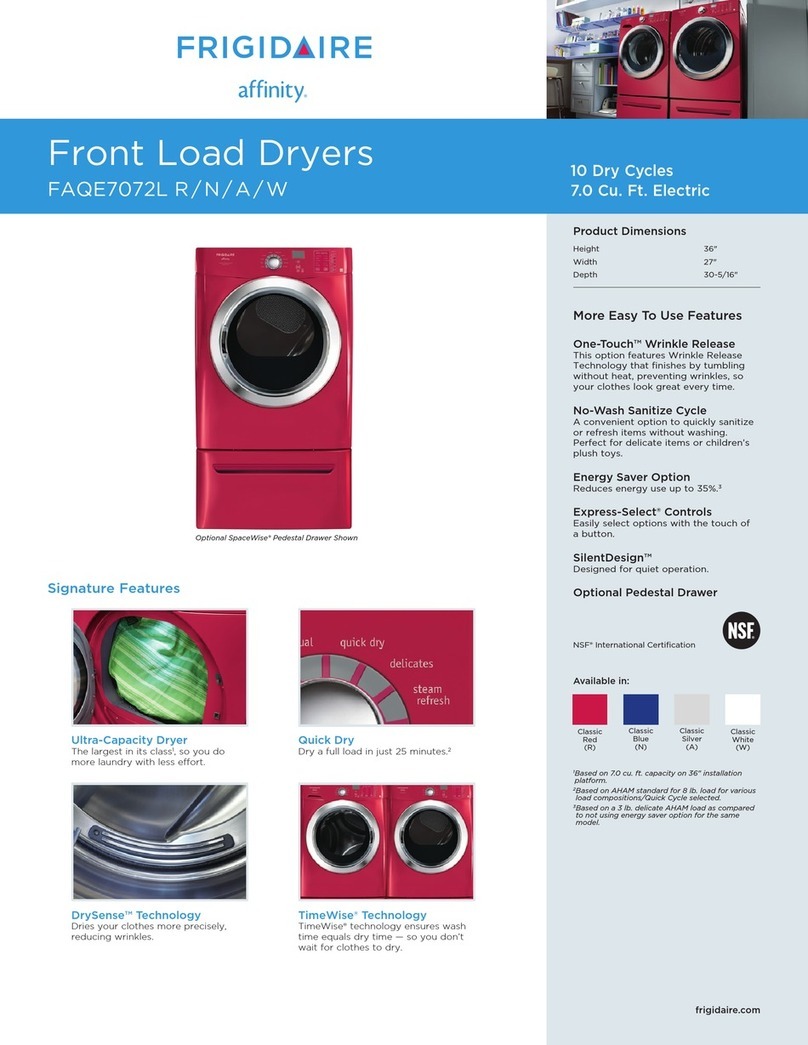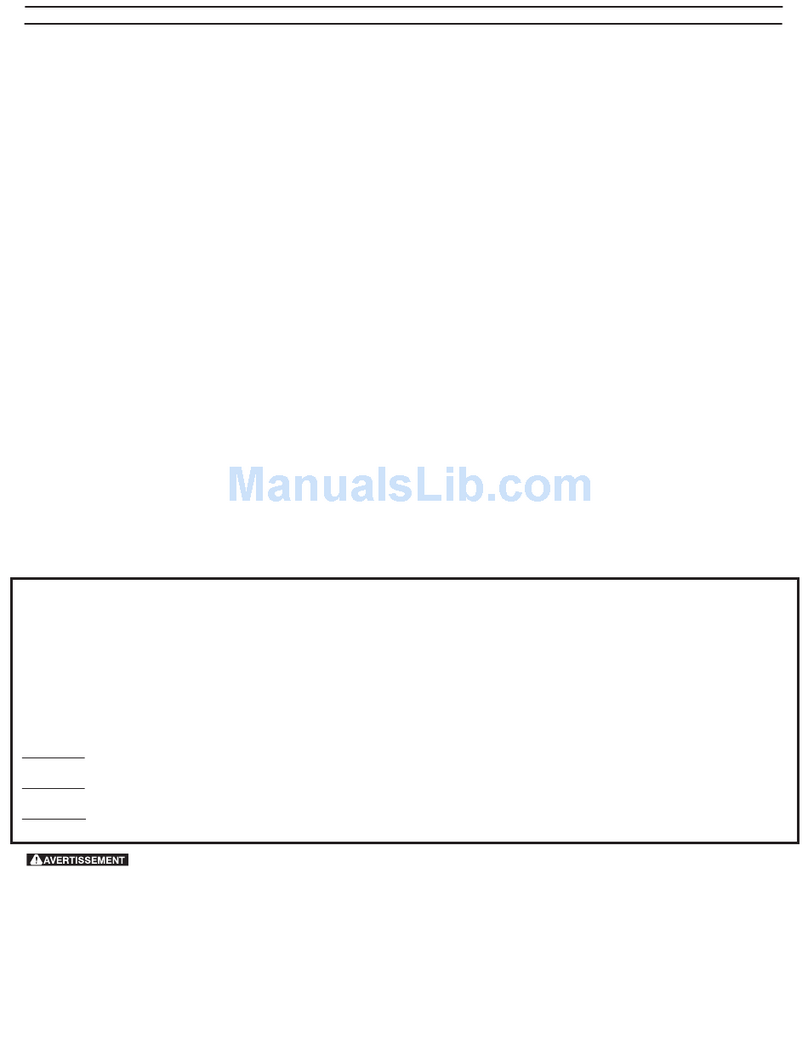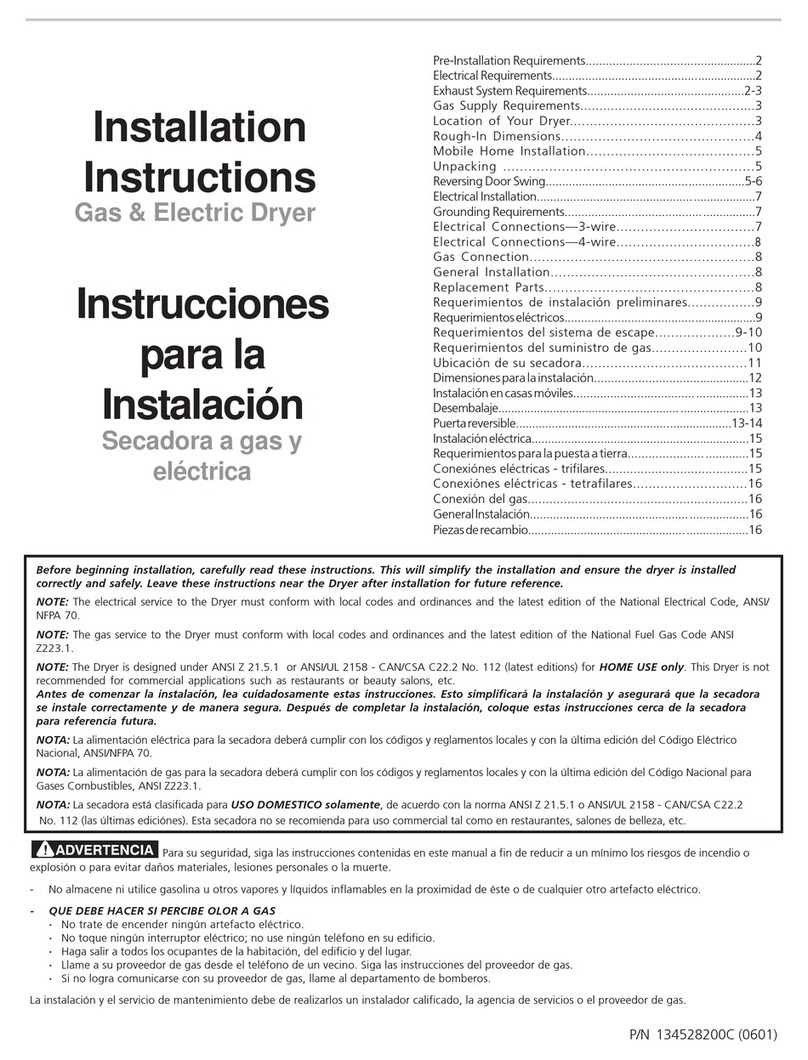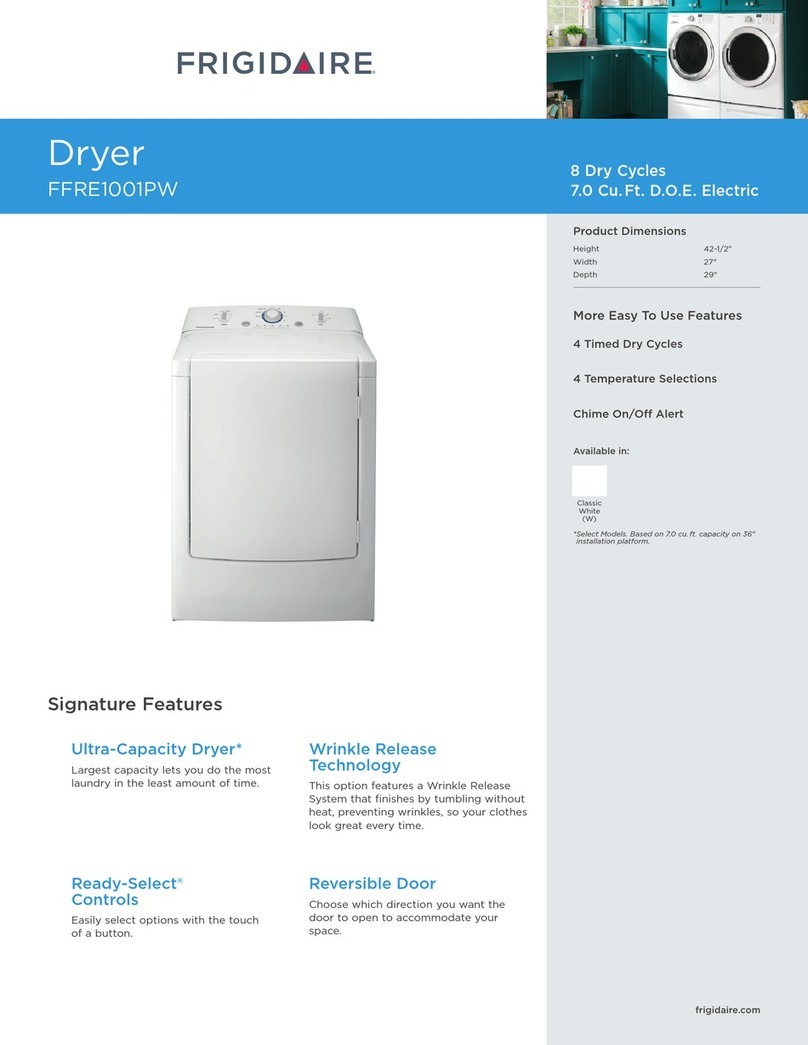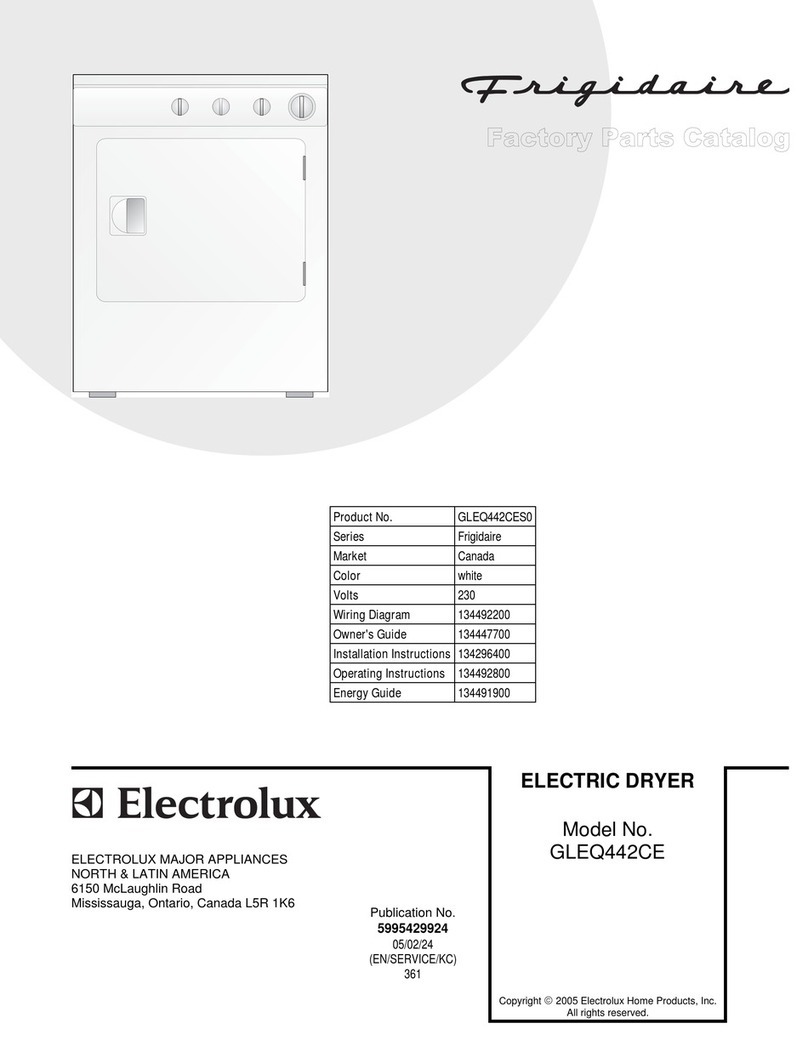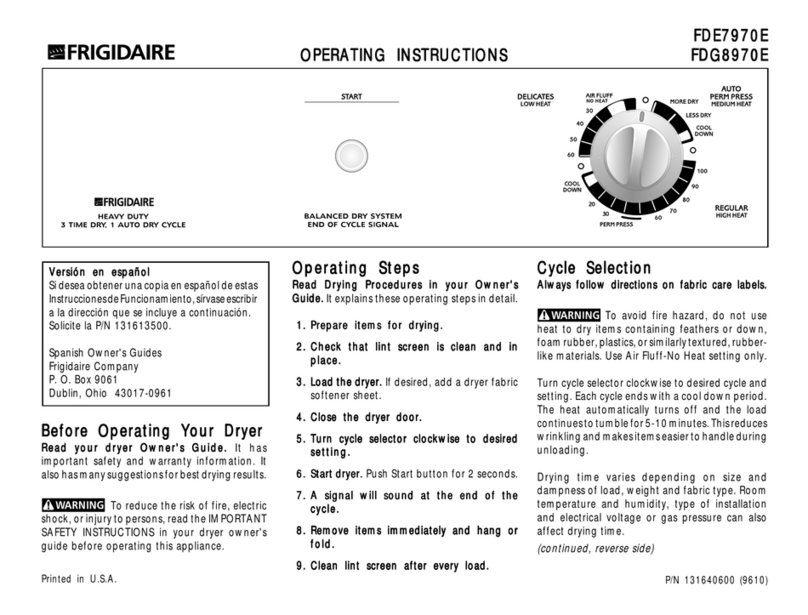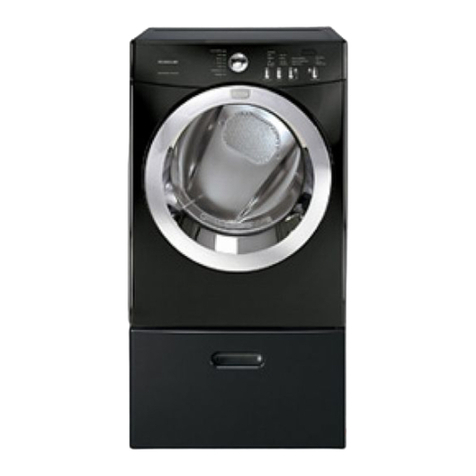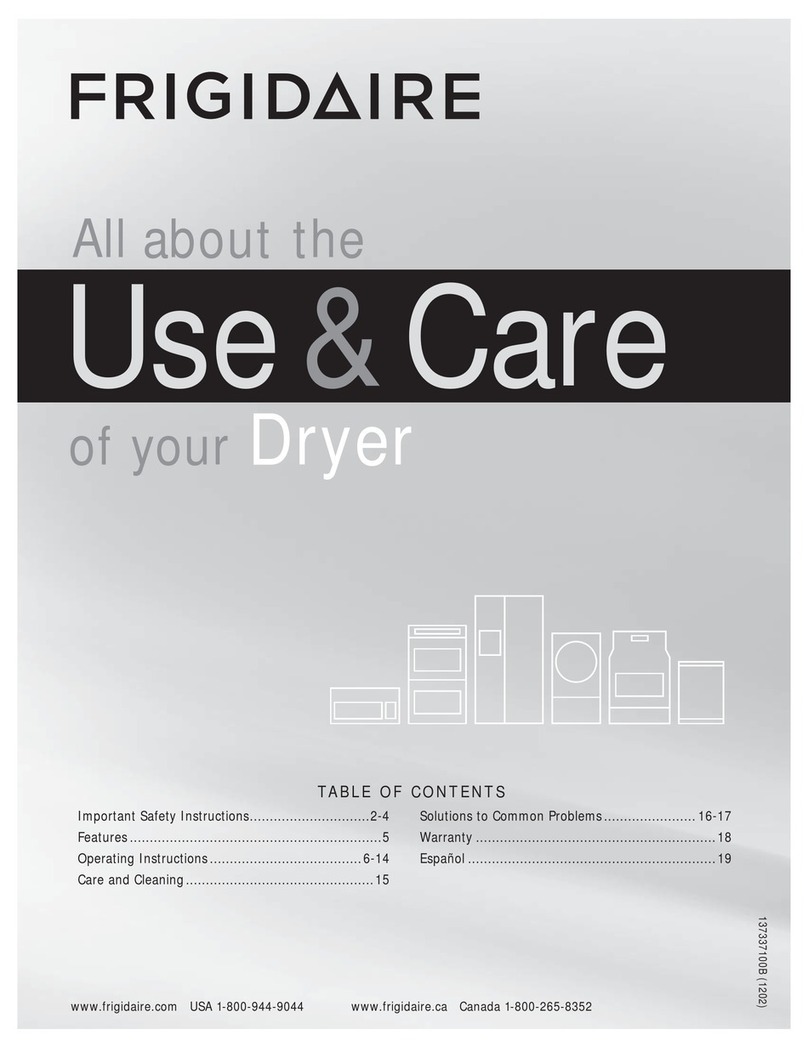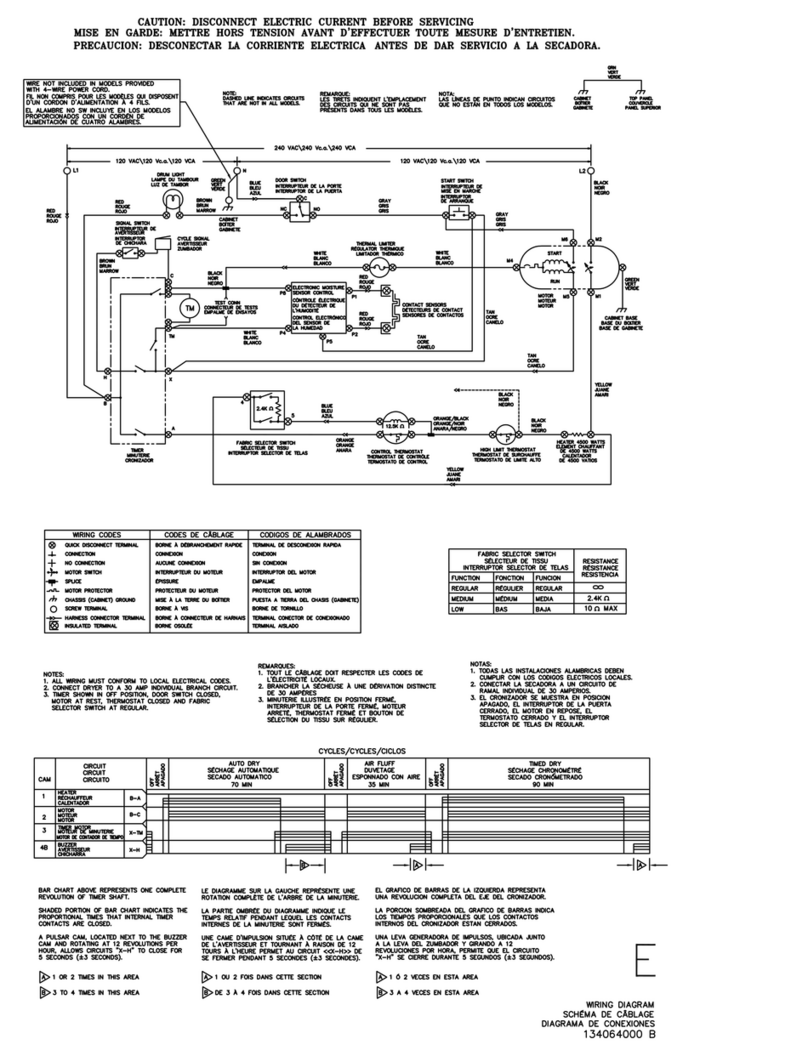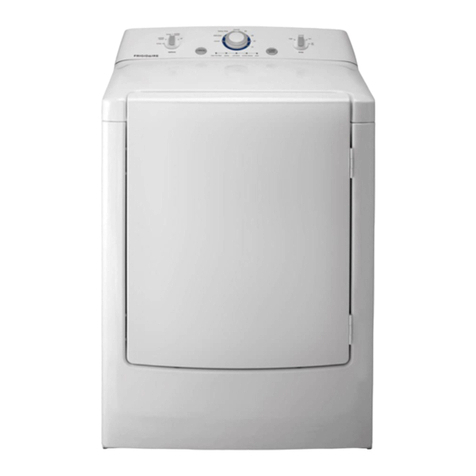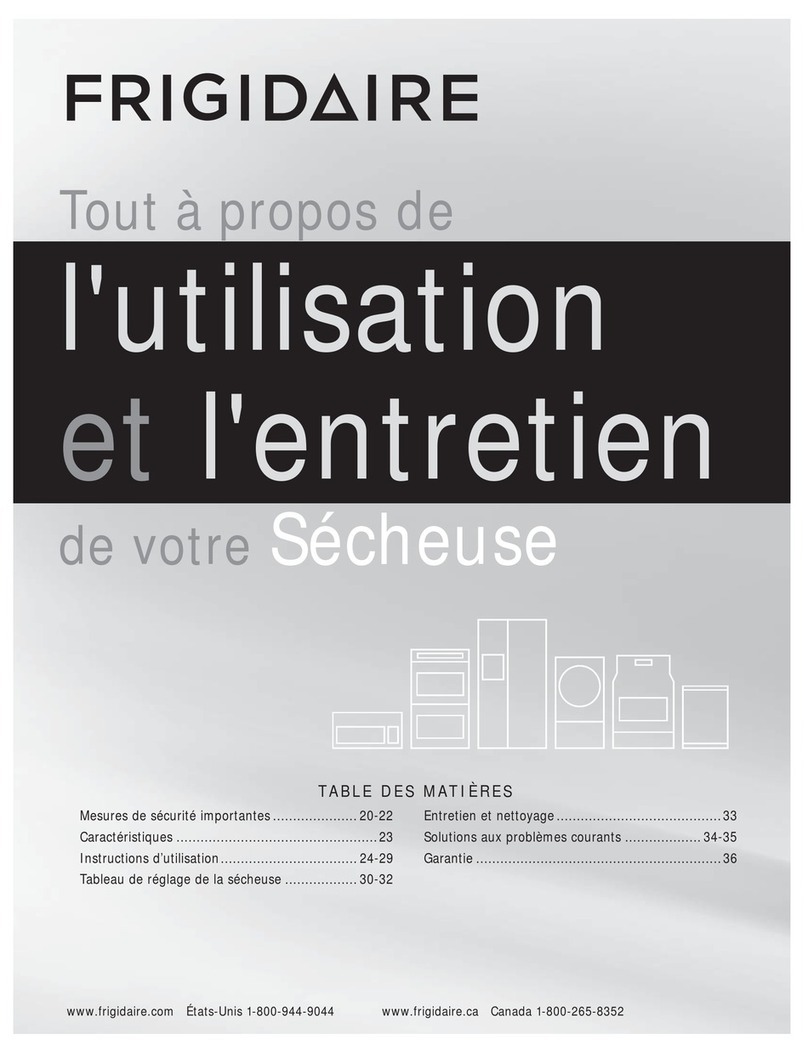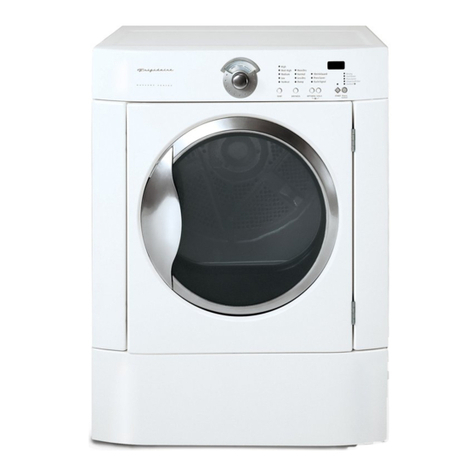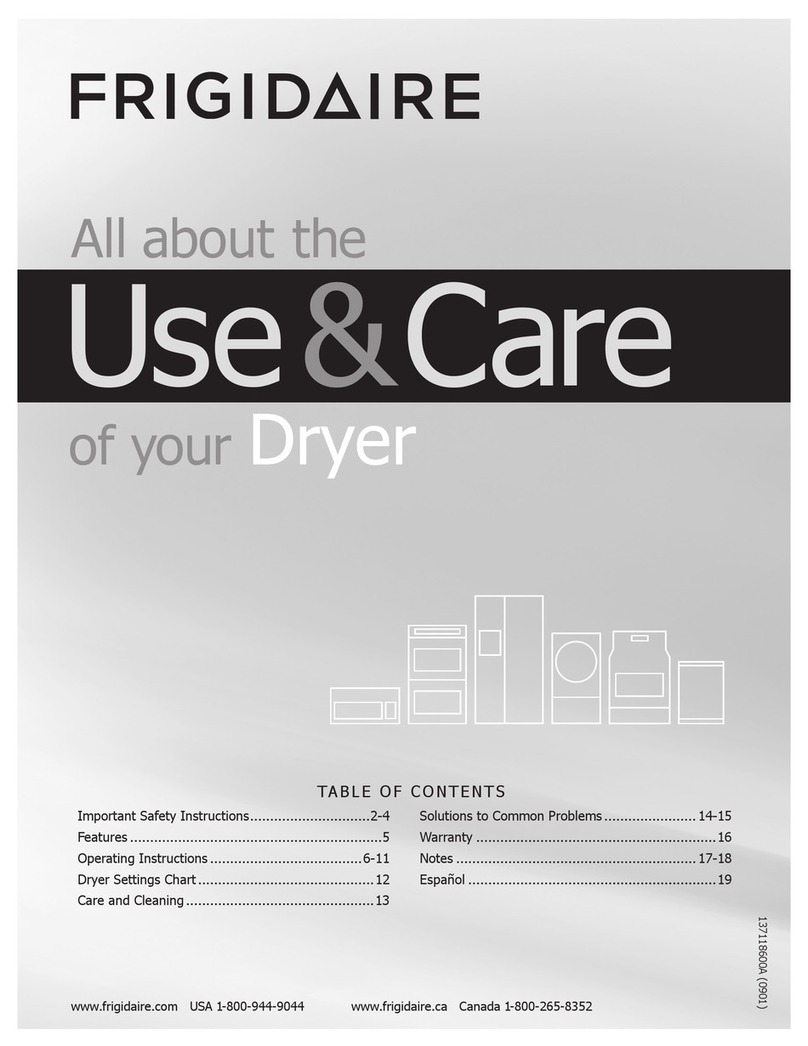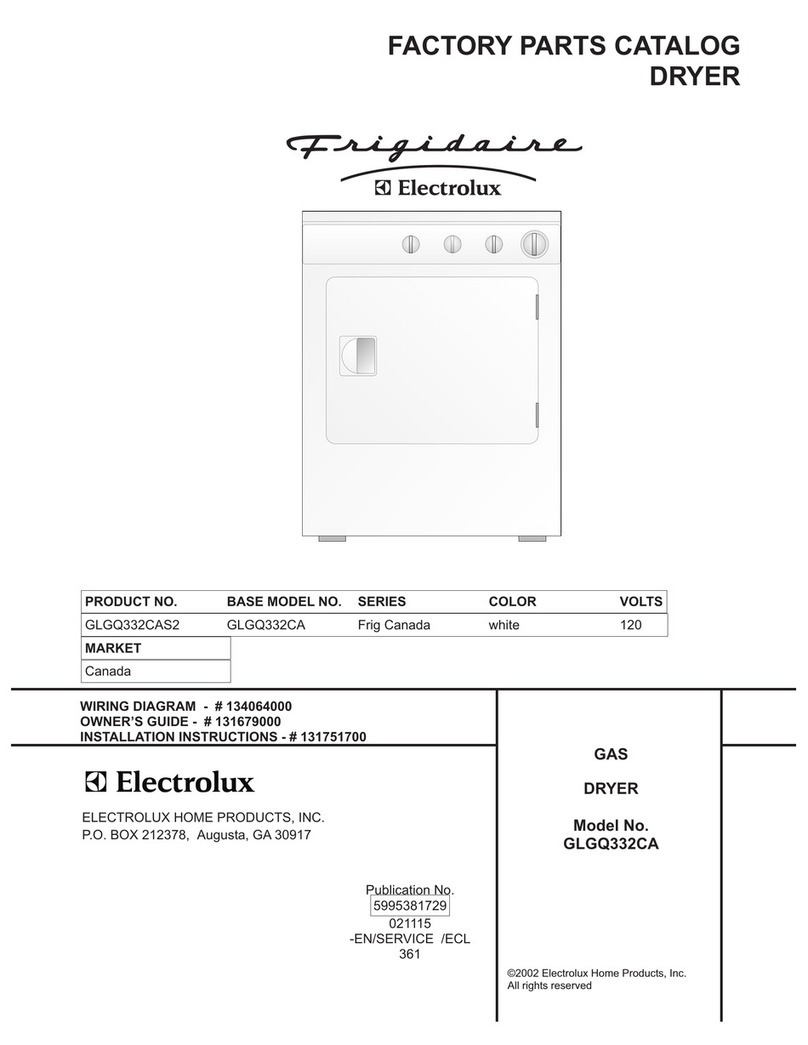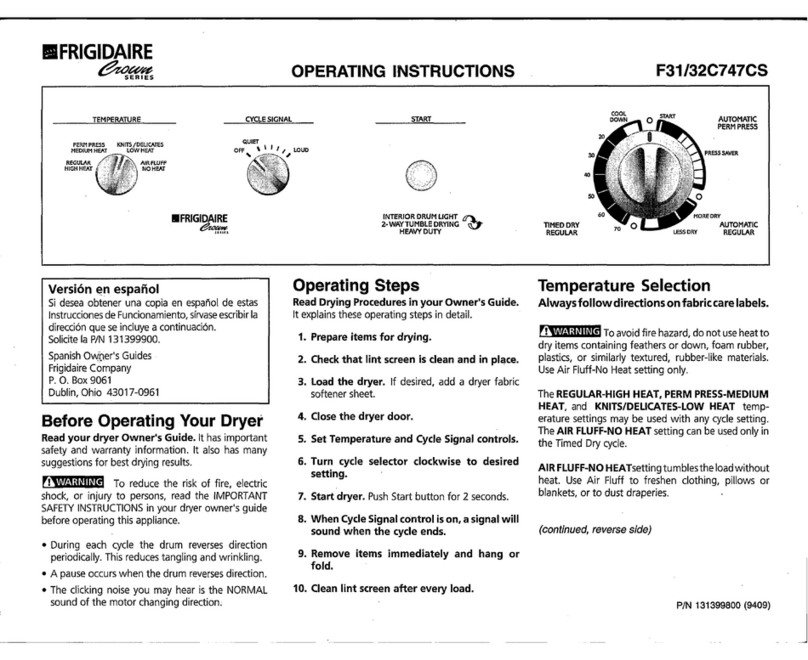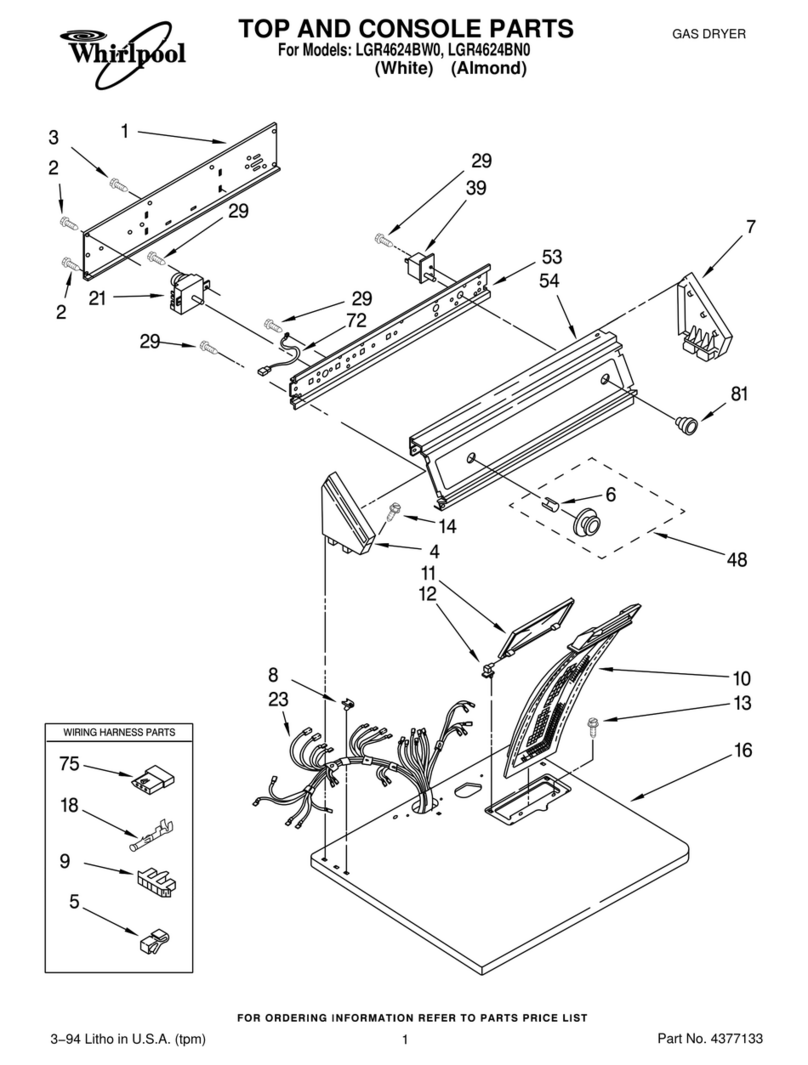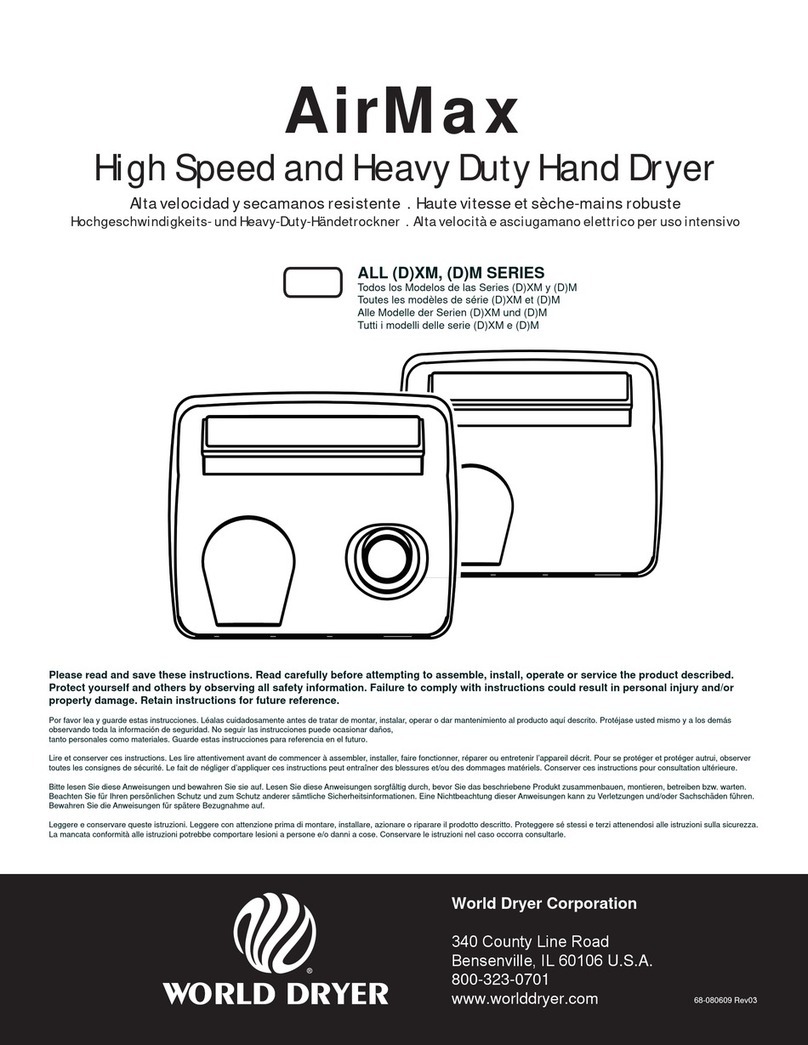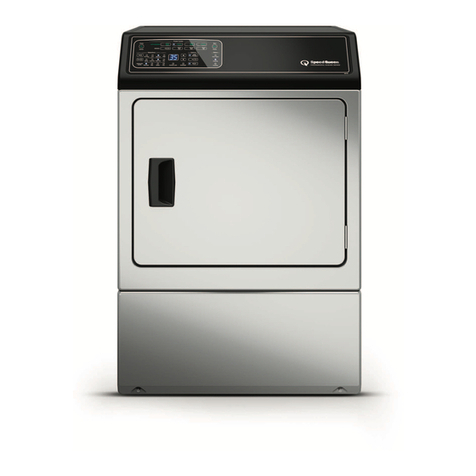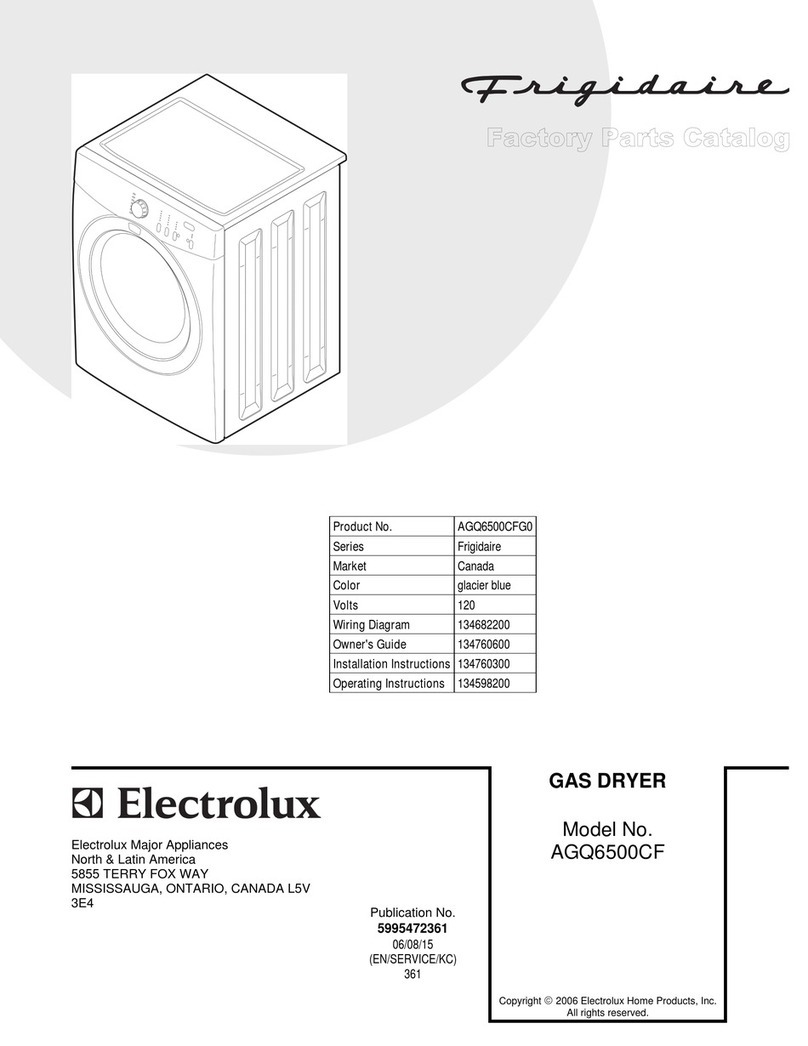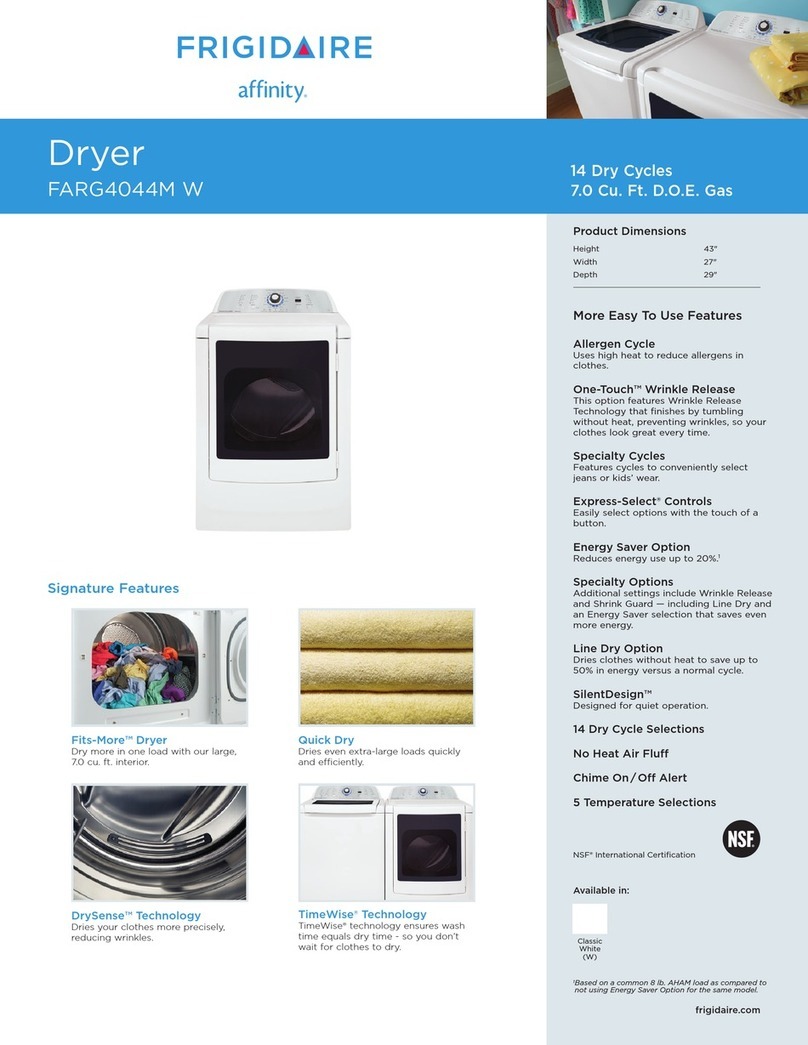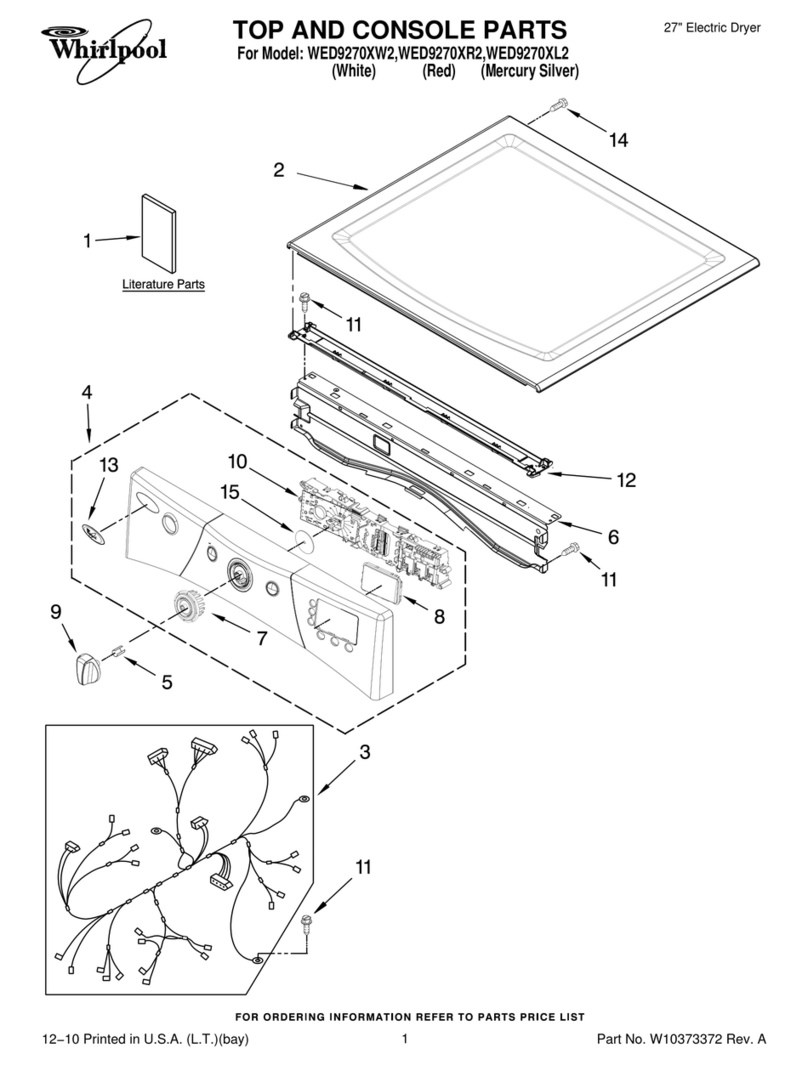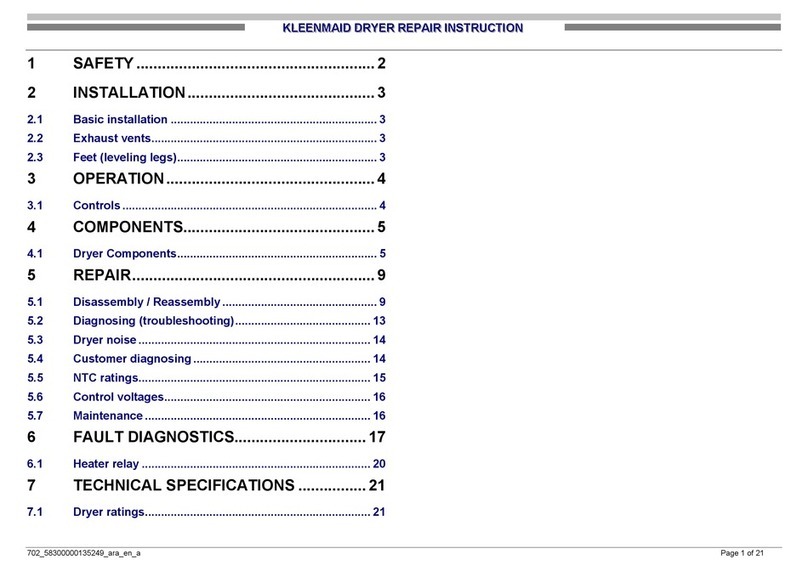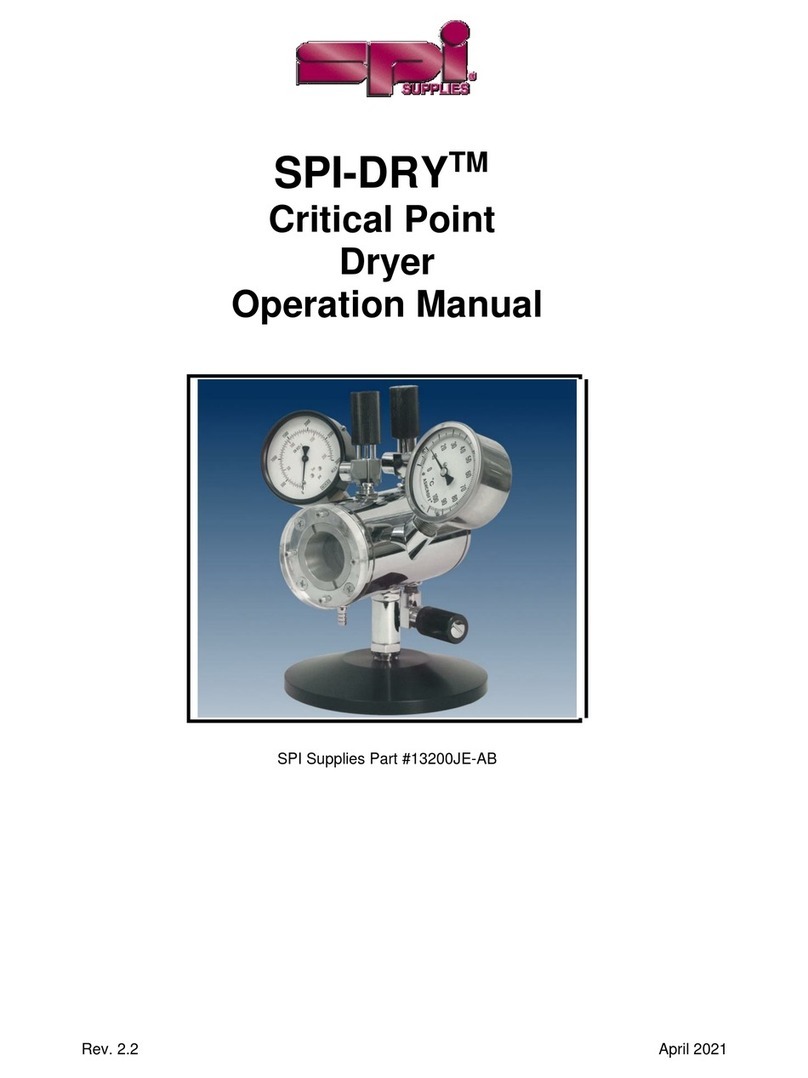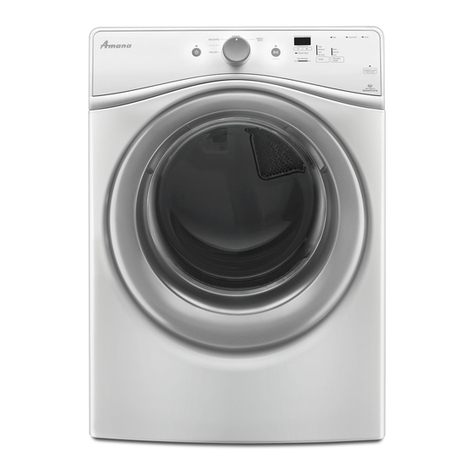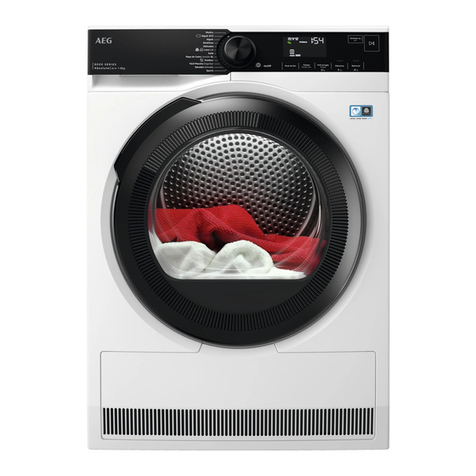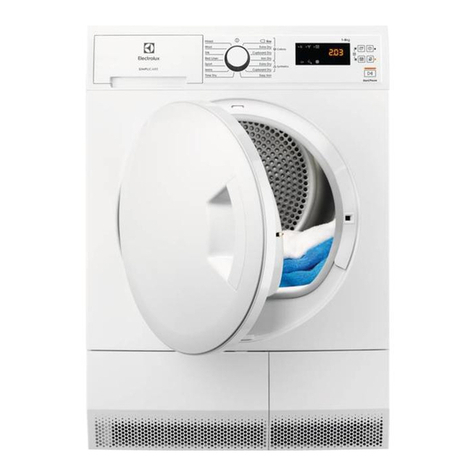
ELECTRICAL REQUIREMENTS
ELECTRICDryer
CIRCUIT- individual 30 amp. branch circuit fused with 30
amp. time delay fuses or circuit breakers.
Use separately fused circuits for washers and dryers, and DO
NOToperate a washer and a dryer on the same circuit.
POWER SUPPLY- 3 wire or 4-wire, 240 volt, single phase, 60
Hz,Alternating Current.
]
POWER SUPPLYCORD KIT- 3 wire - the dryer MUSTemploy
a 3-conductor power supply cord NEMA 10-30 type SRDTrated
at 240 volt AC minimum, 30 amp., with 3 open end spade lug
connectors with upturned ends or closed loop connectors and
marked for usewith clothes dryers. See ELECTRICALCONNEC-
TIONS FORA 3-WIRE SYSTEM.
4 wire - The dryer MUSTemploy a 4-conductor power supply
cord NEMA 14-30 type SRDTor ST(as required) rated at 240
volt AC minimum, 30 amp., with 4 open end spade lug connec-
tors with upturned ends or closed loop connectors and marked
for use with clothes dryers. See ELECTRICALCONNECTIONS
FORA 4-WIRE SYSTEM.
(Canada - 4-wire power supply cord isinstalled on dryer.)
WARNING -Risk of Shock, Appliance grounded to neutral
conductor through a link. Grounding through the neutral link is
prohibited for (1) New branch circuit installations (2) mobile
homes; (3) recreational vehicles; and (4) areaswhere local codes
do not permit grounding through the neutral, (1)disconnect the
link from the neutral, (2) use grounding terminal or lead to
ground appliance in accordance with local codes and (3) con-
nect neutral terminal or lead to branch circuit neutral in usual
manner (if the appliance isto be connected by means of a cord
kit, use4-conductor cord for this purpose). USECOPPERCON-
DUCTOR ONLY.
OUTLET RECEPTACLE- NEMA 10-30R receptacle to be located
so the power supply cord is accessible when the dryer is in the
installed position. (Canada - NEMA 14-30R receptacle.)
NEMA 10-30R NEMA 14-30R
GAS Dryer ]
CIRCUIT- Individual 15 amp. branch circuit fused with a 15
amp. maximum time delay fuse or circuit breaker.
POWER SUPPLY - 3 wire, 120 volt single phase, 60 Hz,
Alternating Current.
POWER SUPPLY CORD - The dryer is equipped with a 120 volt
3-wire power cord.
NOTE: Do not under any
circumstances remove
grounding prong from
plug.
PRONG
GAS SUPPLY REQUIREMENTS
Replace copper connecting pipe that is not
plastic-coated. Stainless steel or plastic-coated brass MUST
be used.
1. Installation MUSTconform with local codes,or in the absence
of local codes, with the National FuelGasCode, ANSIZ223.1
(latest edition).
2. The gas supply line should be of 1/2 inch (1.27 cm) pipe.
3. if codes allow, flexible metal tubing may be used to connect
your dryer to the gas supply line. The tubing MUST be
constructed of stainless steel or plastic-coated brass.
4. The gas supply line MUSThave an individual shutoff valve.
5. A 1/8 inch (0.32 cm) N.RT. plugged tapping, accessible for
test gauge connection, MUST be installed immediately
upstream of the gas supply connection to the dryer.
6. The dryer MUSTbe disconnected from the gas supply piping
system during any pressure testing of the gas supply piping
system at test pressures in excess of 1/2 psig (3.45 kPa).
7. Thedryer MUSTbe isolated from the gassupply piping system
during any pressure testing of the gas supply piping system
at test pressures equal to or less than 1/2 psig (3.45 kPa).
EXHAUST SYSTEM REQUIREMENTS
Use only 4 inch (10.2 cm) diameter (minimum) rigid or flexible
metal duct and approved vent hood which has a swing-out
damper(s) that open when the dryer is in operation. When the
dryer stops, the dampers automatically close to prevent drafts
and the entrance of insects and rodents. Toavoid restricting the
outlet, maintain a minimum of 12 inches (30.5 cm) clearance
between the vent hood and the ground or anyother obstruction.
The following are specific requirements for
proper and safe operation of your dryer. Failure to follow
these instructions can create excessive drying times and
fire hazards.
Do not install a dothes dryer with flexible
plastic venting materials. If your present system is made up
of plastic duct or metal foil duct, replace it with a rigid or semi-
rigid metal duct. InCanada and the United States if metal (foil
type) duct is installed, it must be of a specific type identified by
the appliance manufacturer assuitable for usewith clothes dry-
ers and in the United States must also comply with the Outline
for Clothes Dryer Transition Duct, ULstandard 2158A. Flexible
venting materials are known to collapse, be easily crushed and
trap lint. These conditions will obstruct clothes dryer airflow and
increase the risk of fire. Ensure the present duct is free of
any lint prior to installing dryer duct.
